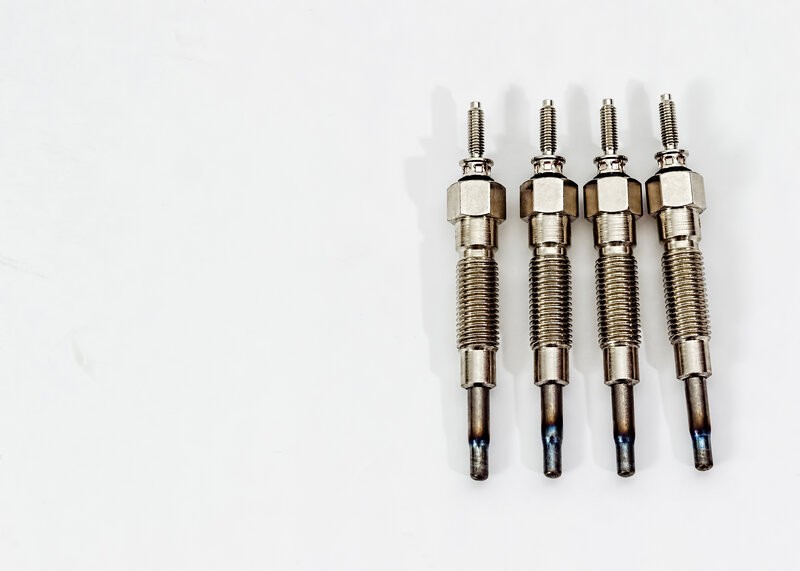Diesel engines are renowned for their robust performance and fuel efficiency, particularly in heavy-duty applications. However, like any complex system, they can experience issues. One common problem involves glow plugs, essential components for cold-starting diesel engines. Understanding How To Test Glow Plugs is crucial for maintaining your diesel vehicle’s reliability. This guide provides a step-by-step approach to testing glow plugs effectively.
Understanding the Function of Glow Plugs
Before delving into testing procedures, it’s important to grasp the role of glow plugs in a diesel engine. Unlike gasoline engines that utilize spark plugs, diesel engines rely on compression ignition. Glow plugs preheat the combustion chamber air, enabling efficient fuel ignition, especially in cold weather. Without functioning glow plugs, starting a diesel engine in low temperatures can be challenging or even impossible. Each cylinder typically has a dedicated glow plug.
A Step-by-Step Guide on How to Test Glow Plugs
Testing glow plugs involves a systematic process to accurately diagnose potential issues. Here’s a detailed seven-step guide:
1. Initial Diagnostic Inspection
Begin by thoroughly inspecting the engine compartment. If the check engine light is illuminated, consult the vehicle’s owner’s manual to identify any diagnostic trouble codes (DTCs). Specific DTCs may indicate glow plug problems. Visually examine the glow plugs for signs of damage, such as carbon buildup, corrosion, or damaged wiring.
2. Utilizing an Infrared Thermometer
After the visual inspection, employ an infrared thermometer to assess the temperature of each glow plug. Briefly run the engine to warm up the glow plugs. Then, scan each plug with the thermometer. Significantly lower temperature readings compared to other plugs might indicate a malfunctioning glow plug. However, this method can produce false positives, necessitating further testing with a multimeter.
3. Multimeter Preparation
A multimeter is crucial for accurately testing glow plugs. Set the multimeter to measure resistance (ohms). Before connecting to the glow plugs, touch the multimeter’s positive and negative leads together and note the reading. This is the resistance of the meter itself, which should be subtracted from subsequent readings for accuracy.
4. Battery Voltage Verification
Before testing the glow plugs, ensure the battery is providing sufficient voltage. Set the multimeter to measure voltage (volts). Connect the positive lead to the battery’s positive terminal and the negative lead to the negative terminal. A fully charged battery should read around 12.6 volts or higher. A lower reading could indicate a weak battery affecting glow plug performance.
5. Glow Plug Connector Removal
Locate the glow plugs using the vehicle’s service manual. Carefully disconnect the electrical connectors from each glow plug. Inspect the connectors for corrosion or damage. Clean them if necessary. While you can test individual glow plugs, it’s often recommended to test all of them for consistency.
6. Connecting the Multimeter to the Glow Plugs
Set the multimeter back to ohms. Connect the positive (red) lead of the multimeter to the terminal of the glow plug. Connect the negative (black) lead to a good ground point on the engine block, such as a clean, unpainted metal surface or the engine’s ground strap.
7. Interpreting the Multimeter Readings
Consult the vehicle’s service manual for the specific resistance specifications of your glow plugs. Subtract the initial multimeter resistance reading from the measured value to obtain the actual glow plug resistance. A reading outside the specified range indicates a faulty glow plug. Compare readings across all glow plugs. Even a single faulty glow plug can impact engine performance, so consider replacing all glow plugs if one is defective.
Conclusion
Knowing how to test glow plugs empowers diesel vehicle owners to diagnose and address starting problems, especially in cold weather. By following this comprehensive guide, you can effectively test your glow plugs and ensure your diesel engine starts reliably. If you encounter difficulties or prefer professional assistance, consult a qualified diesel mechanic. Regular maintenance and timely replacement of faulty glow plugs will contribute to the longevity and optimal performance of your diesel engine.
